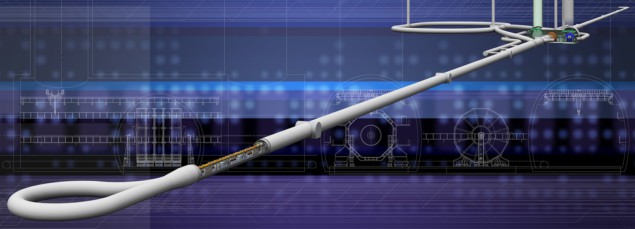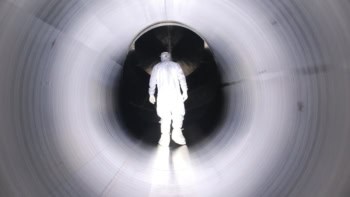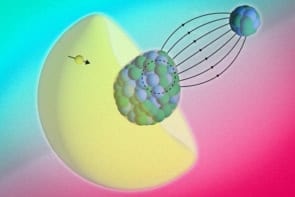Japanese particle physicists are hoping that the government will give the green light to the International Linear Collider next month. But as Michael Banks reports, they may be disappointed

Particle physicists in Japan are facing a nervous wait as their government decides whether to host the International Linear Collider (ILC). Following years of delays, the government is expected to reach a conclusion next month. But the signs are not good: a report released in late December, which examined the case for an ILC in Japan, has raised several issues about the proposal and did not support its construction.
The ILC is a particle collider that would smash together electrons with positrons to study the Higgs boson, which was discovered in 2012 at CERN’s Large Hadron Collider, in unprecedented detail. First mooted over a decade ago, the ILC’s five-volume technical design report was published in June 2013 and called for a 30 km-long linear collider that would smash electrons with positrons at around 500 GeV (see timeline below). The Japanese physics community quickly got behind the project, expressing its desire to host the machine, with a site in the Tōhoku region, about 400 km north of Tokyo, chosen as a potential location.
However, the government has dragged its feet over whether to support the project, and last year – to make the ILC more palatable – physicists came up with a revised plan. This involved reducing the ILC’s energy to 250 GeV and shortening the length of the tunnel to around 20 km, with the option of upgrading the collider later on. The ILC is estimated to cost around ¥800bn ($7.5bn) over a 10-year period, with Japan expected to provide half the cash.
In July 2018 Japan’s Ministry of Education, Culture, Sports, Science and Technology (MEXT) asked the Science Council of Japan (SCJ) to form an independent committee to review the revised plan for the ILC including its technical feasibility and how it would be funded. Released on 19 December, the report includes some positive statements about the science the ILC would undertake. It says, for example, that the precise measurement of the Higgs coupling is “extremely important” and that the project is a substantial way to develop a hub of top researchers in the country.
Timeline: twists and turns of a linear accelerator
2004 An international panel of experts decide that a future linear collider should be based on superconducting technology that has been developed at the DESY laboratory in Germany
2005 Barry Barish of the California Institute of Technology in the US is chosen to lead the effort to build the International Linear Collider (ILC). The ILC’s first tentative design is released calling for a 20 km-long machine that would operate at 500 GeV with a possible future upgrade to 1 TeV that would require extending the tunnel by an additional 18.6 km
2007 Updated “reference design” is released for the ILC calling for two 12 km-long arms to collide electrons with positrons. The estimated cost of the ILC is $6.7bn
2011 The Japanese particle-physics community announces it will bid to host the ILC with possible candidate sites in Kyushu and Iwate
2013 Lyn Evans, who masterminded the Large Hadron Collider’s construction, takes up the reins as linear-collider director, overlooking the design of the ILC. The “technical design report” for the ILC is released calling for a 31 km-long track of superconducting cavities that accelerate electrons to 500 GeV. The ILC community identifies a location in the Iwate prefecture north of Tokyo as a possible site for the ILC
2016 Japan’s High Energy Accelerator Research Organization (KEK) releases a 12-page plan showing that they have measures in place if the Japanese government decides to begin negotiations with other countries to start construction
2017 The International Committee for Future Accelerators, which oversees work on the ILC, endorses plans to reduce the scope of the collider. Estimated to cost $7.5bn, the ILC would be built in a 20 km-long tunnel and with an initial design energy to 250 GeV with the option of further energy upgrades
However, the report adds that the ILC’s importance beyond research is “unclear” and “considered to be limited”. It also warns that given the lack of accelerator expertise in Japan there are “large uncertainties” that the country would have the necessary expertise. Another criticism is that the ILC does not yet have enough international support.
Yet Hitoshi Murayama from the Kavli Institute for the Mathematics and Physics of the Universe in Tokyo, says that this view is unfair. “Unless the Japanese government starts negotiation with potential partners, we will not know how much international support there will be,” he says. “Within the particle-physics community, international support has been very strong and linear collider workshops always draw hundreds of physicists.”
The SCJ committee concludes, however, that given the current status of the project it “cannot reach a consensus to support hosting the 250 GeV [ILC]” in Japan. “The committee considers that the government should be cautious regarding a decision to announce its commitment to host the ILC,” the report states. A government decision on the ILC is expected by 7 March.
Analysis: a Japanese way of saying no?
While physicists await the Japanese government’s decision to go-ahead with the International Linear Collider (ILC), the recent report by the Science Council of Japan (SCJ) has dealt them a possible fatal blow. Released in December, the SCJ’s report is at best a lukewarm response to the ILC (see above). That was perhaps expected, given that the chair of the committee – Yasuhiro Iye, director of the Japan Society for the Promotion of Science – has previously voiced sceptical views about the project.
Japanese particle physicists will surely hope that the government will take other factors into account before deciding. In particular China is ramping up its plans for its own collider and last month Europe unveiled a blueprint for the Future Circular Collider, which has stirred debate within the physics community over whether it is worth spending billions on a new collider that may not find any physics beyond the Standard Model.
Yet even if the SCJ’s report does not signal the end of the road for the ILC, the government may simply delay a decision further. As one senior physicist told Physics World, “the consistent delay in deciding to host the ILC seems like a Japanese way of saying ‘no’ ”.
If that happens, then it is likely that linear-collider physicists will surely have to get behind another proposal – the Compact Linear Collider, or CLIC – that can operate at higher collision energies than the ILC. The ball is now firmly in the Japanese government’s court.



